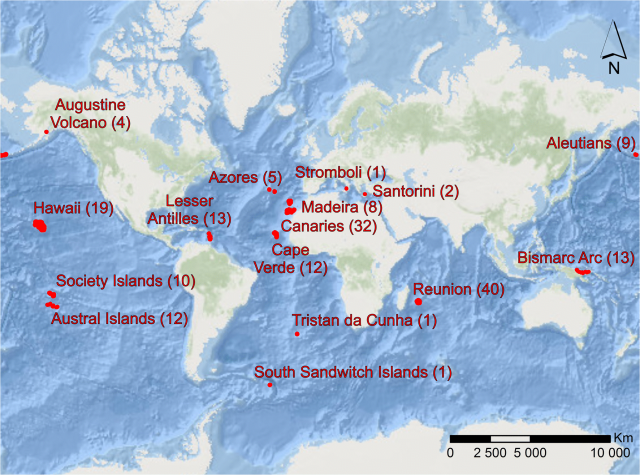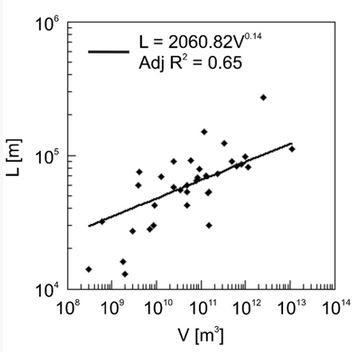4 September 2019
A global database of giant landslides on volcanic islands
Posted by Dave Petley
A global database of giant landslides on volcanic islands
In a paper just published in the journal Landslides, et al. (2019) describe the compilation of a new global database of giant landslides on volcanic islands. This database is hosted on the website of the Institute of Rock Structure & Mechanics. The authors note that “the records can be downloaded as a spreadsheet or as a kml file for interrogation in a number of geospatial software programs including ArcGIS and Google Earth“.
The dataset contains records of landslides with a volume in the order of cubic kilometres (a cubic kilometre is 1 billion m³). The records are limited to landslides occurring on purely volcanic islands (i.e. not those formed through a combination of volcanic and other processes). The hazards posed by these giant volcanic landslides are well documented (and are sometimes somewhat hyped), but the authors note that our understanding of these types of failures remains inadequate.
In total, the database contains 182 landslide records, with the distribution as below:-

The distribution of records in the global database of giant landslides on volcanic islands. Image from Blahůt et al. (2019)
.
These landslides can be truly vast. The median length of the landslides is 59.4 km, and the median surface area is 880 km². However, Blahůt et al. (2019) describe the Nuuanu debris avalanche on Oahu, Hawaii, which has a length of 270 km and a surface area of 29,241 km². This extreme size is expressed in the graph below, showing length against volume, for the entire dataset:-

The relationship between landslide length and volume for the 182 records in the global database of giant landslides on volcanic islands. Graph from Blahůt et al. (2019).
.
As usual, the general trend is that length increases with volume, but note the extreme size of the events at the higher end of the range of scales.
Finally, Blahůt et al. (2019) note that more than half of the events in the dataset are known to have occurred in the last 500,000 years, which in geological terms is brief. There is a little doubt that many, many more landslide deposits must be sitting in the submarine sedimentary record. Thus, with time it is likely that the database will expand.
Reference
Blahůt, J., Balek, J., Klimeš, J. et al. 2019. A comprehensive global database of giant landslides on volcanic islands. Landslides. https://doi.org/10.1007/s10346-019-01275-8


 Dave Petley is the Vice-Chancellor of the University of Hull in the United Kingdom. His blog provides commentary and analysis of landslide events occurring worldwide, including the landslides themselves, latest research, and conferences and meetings.
Dave Petley is the Vice-Chancellor of the University of Hull in the United Kingdom. His blog provides commentary and analysis of landslide events occurring worldwide, including the landslides themselves, latest research, and conferences and meetings.
“Reconstructing the Anak Krakatau flank collapse that caused the December 2018 Indonesian tsunami”
Rebecca Williams ; Pete Rowley ; Matthew C. Garthwaite
Geology (2019)
https://doi.org/10.1130/G46517.1
https://pubs.geoscienceworld.org/gsa/geology/article-abstract/573356/reconstructing-the-anak-krakatau-flank-collapse
Paywalled, no Arxiv to be found, but they reckon only ~0.1 km^3 rather than the much bigger failure expected. They do mention, IIRC, that other workers’ simulations suggest ~0.15 km^3 may suffice…
Found on BBC News, https://www.bbc.co.uk/news/science-environment-49568107
===
I must wonder if Anak’s ‘semi-phreatic blow-out’ provided the boost beyond ‘mere gravity’…